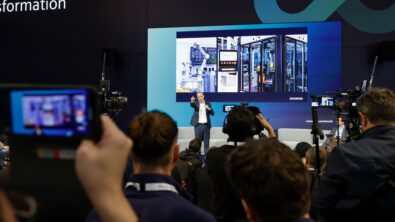Will PLM catch the wave?
Yesterday Google previewed one of its newest apps in conquest of world dominationindexing the world’s information, Wave. There’s a (rather lengthy) demonstration embedded below (be sure to watch at least the first 10-15 mins to get an idea of how revolutionary this really is). This app was built by the same guys that brought you Google Maps, arguably one of the apps that kicked off the whole “consumer focused mash-up” wave (no pun…oh, who am I kidding). The basic premise of Wave is how would email and IM (invented over 40 and 20 years) look if they were invented today. Rather than users sending message back and forth at each other like arrows over a medieval battlement, messages start as “collaborative objects” that are shared in the cloud and everyone in the conversation has the ability to respond or edit the object. Sounds an awful lot like a discussion board, eh? Well they could stop there – they added in the whole real time element that friendfeed has recently popularized. Updates to conversations appear on all screens simultaneously (take a look at around 11 mins in the video to see this in action). There are alot of other really interesting twists like being able to add people to conversations after they have started and watch them “replay” so you can catch up on how the conversation got to its current state (watch at about 20 mins if you want to see a massive demo fail – even Google isn’t perfect all the time, but to be fair it is a developer preview).
Is this what the future holds for Gmail? Most likely, but what is a more interesting question (to me anyway) is what does this interaction paradigm portend for PLM? If you think about it for half a minute, you’ll quickly see how uploading models into a vault or PDM system to share with your team is an awful lot like email, just with bigger payloads and more complex information. What if models where designed from the ground up as a shared object? Not just passing things back and forth for sequential editing and updates, but really being able to have a model shared that design teams could simultaneously edit? What if later additions to the team could replay all the previous action (seeing who did what) to catch-up and immediately start adding value? Google Wave may or may not be a success in and of itself, but there is definitely something to the interaction model that will persist. While we may not have realtime collaborative models today, the good news is that like many things that start on the consumer side, this paradigm will more likely than not make its way into enterprise software, including PLM. So IMHO the question is when, not if.
What do you think? Are there hidden downsides to real time collaboration with everyone sharing the model? Or do you gotta have it now?


